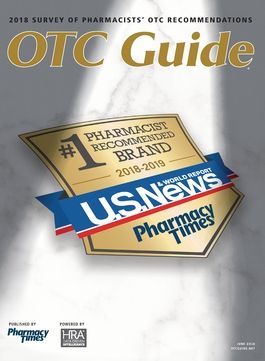Publication
Article
OTC Guide
Making Sense of Probiotics
Author(s):
Probiotic is a general term used describe the following 3 single-cell live organisms: Bifidobacterium, Lactobacillus, andSaccharomyces.
They are the opposite of parasites and instead enhance life. Hence, probiotic means pro-life.
Probiotics have 3 names: a brand name like Superdophilus, a generic name like lactobacillus acidophilus, and, within that generic, a name that can be further divided into a genus (Lactobacillus)and a species (acidophilus).Sometimes, to simplify things, people will refer to a probiotic only as acidophilus or lactobacillus or the brand name.
Some brand-name probiotics have multiple strains in them, just as some combination drugs have several medications in them.
Technically, a probiotic can describe any live organism that fits this description of a symbiotic relationship with the host. There are 2 other organisms, Bacillus coagulans and Streptococcus thermophilus, that are occasionally mentioned in the medical literature.
Probiotics are like drugs. Each drug—or in this case, probiotic strain—has a different effect and mechanism of action. The probiotic usually exerts its effects by different mechanisms, including via the chemicals it produces. Some of these chemicals are anti-inflammatory in their actions, some have astringent and/or antidiarrheal effects, and some stimulate nearby immune cells.
Bifidobacteriumare the most abundant so-called good bacteria in the human gastrointestinal tract, with bifidusmeaning “split in 2.” Viewed under a microscope, they have a y, v, orxshape. They produce acetic, and butyric, and lactic acids but rarely succinic acid.
Lactobacillusspecies are rod-shaped bacteria that produce lactic acid from fermentable sugars such as fructose, galactose, glucose, and/or lactose. The major by-products of lactobacillifermentation are acetic and lactic acids. There are more than 80 species.
Saccharomycesis known as the brewer’s yeast or baker’s yeast and is used to make beer, bread, and wine. Saccharomycescerevisiae andboulardii are the only 2 used in medicine.
Probiotics are unique and are not always interchangeable. It is important to match the right strain with the right desired effect. To find out which product matches a specific desired effect, consult a database that collects this information as it becomes available. A go-to database for consumers is Medline plus (medlineplus.gov). Enter the name of the probiotic in the search field (Bifidobacterium, Lactobacillus, orSaccharomyces). This website also has a Spanish language option.
Pharmacists and other medical professionals, should check out AEProbiotic (usprobioticguide.com).
Both these databases are free, but additional information is available via a subscription to consumerlabs.com or naturaldatabase.com.
All 4 of these databases rate the evidence of medical literature that supports the use of a probiotic for a medical condition. Reading the level of evidence shows how promising the results will be.
As a note, probiotics to treat diarrhea have the best evidence of all the indications. The evidence is also strong for developing a stronger immune system, especially in children and young adults. But there are other indications that do not have as much convincing evidence. To a lesser extent, probiotics can also help with fighting cavities, losing weight, and lowering cholesterol.
So, to find out how probiotics can be beneficial, it is important to first decide what the goal is. Look up the indication in the databases mentioned above. Match the right probiotic product with the right indication, note the level of evidence, and then monitor the results.
Also, it is very important to follow the directions provided by the manufacturer. These directions help to ensure the survival of the live organisms to the site of action: the intestines. If the manufacturer instructs consumers to store the product in the refrigerator or to take it on an empty stomach, follow those guidelines. Probiotics are very dose dependent. Studies have been conducted using various doses. The highest dose always yields the best results. So, follow the directions provided by the manufacturer, and do not skimp on doses.
Visit otcguide.net for more information on probiotic supplement recommendations.
Gunda K. Siska, PharmD, is a PRN staff pharmacist at Presbyterian Hospital in Albuquerque, New Mexico.







